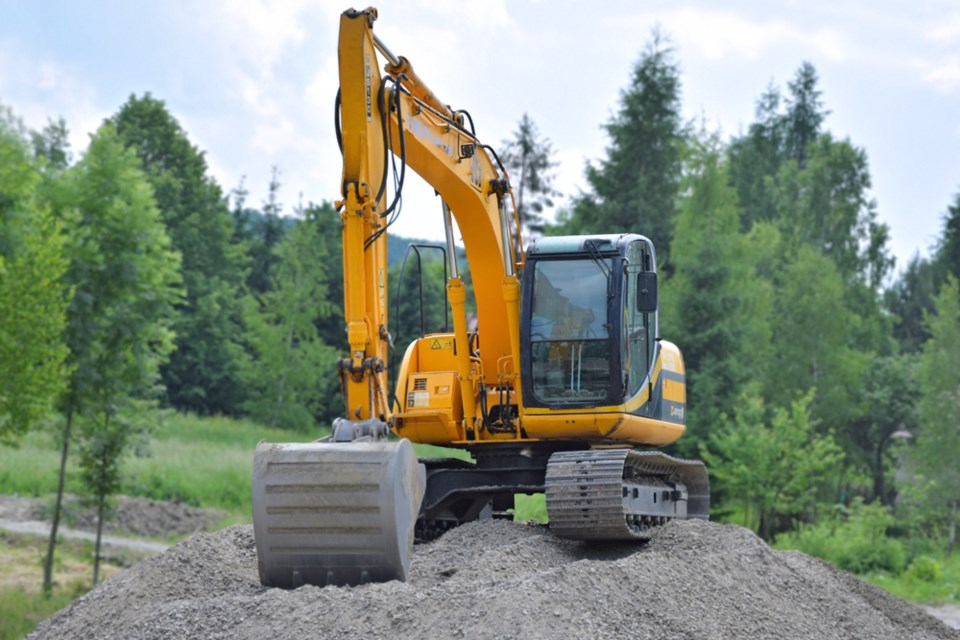Since he can't build a housing development on his land in the immediate future, Squamish developer Bob Cheema is proposing a mine for his property.
"We have everything in place. People know that the zoning's already there for it," Cheema told The Chief. "There's nothing new. I don't know why it's so exciting to anybody."
The Cheema lands are currently zoned RE, or resource, which allows for the extraction of gravel, rock and earth, among other things.

Cheema said he will be concentrating on this project for now, as his housing proposal has yet to receive approval from municipal council.
The public has a month to make written comments on the proposal to the chief inspector of mines.
Commenters can direct their remarks to the inspector at [email protected] with a copy to [email protected].
"We are doing this right now," said Cheema. "There's nothing in the city right now for the housing development."
A public notice of work says the mining operation is intended to start on the Cheema lands on Nov. 1 this year and run until 2024. However, Cheema told The Chief a firm start date has yet to be set.
The mine application is a change in plans after Cheema's proposal to build a residential development was denied about a year ago.
Under the District's Official Community Plan, the municipality will only consider development applications for properties outside the town's growth management boundary when the population reaches 34,000. A lower 22,500 threshold may be considered should the development address impacts associated with growth.
The Cheema lands fall outside the growth boundary, and, as of the most recent census in 2016, Squamish's population has a count of about 19,800.
Cheema's proposal last appeared before council on October 2018, but was turned down. Elected officials decided against removing the population threshold.
The Cheemas purchased the land in 2006.
Should the mine go ahead as proposed, for about five years, crews will extract 10,000 tonnes of stone — generally granite or basalt — for use as dimensional stone.
Dimensional stone is typically found and used in landscaping, walls, floors, and stairs for houses.
Blasting may be needed to create access roads, but the application says it won't be used for the actual mining process.
Taking out the rock will involve excavators, as well as breaking down boulders with hand tools, according to the document.
As a number of trails pass through Cheema's lands, many in the community have wondered what impact there could be to recreationalists who frequent the area.
Cheema told The Chief the trails will remain open should the mine go forward.
"We could've done this a long time ago if we wanted to do that," he said. "We can close the [entrance] to the people if we want to do that — we don't play that kind of game."
A representative from the Squamish Off-Road Cycling Association had an initial look at the application, and said it appears there won't be any significant harm to trails in the area.
"From what we can tell, they've made the best effort they can to mitigate impact on trail users, and we're going to continue to work with them as issues arise," said Usman Valiante, director of government relations for SORCA.
"Wherever they're proposing to mine... there are no trails there."
However, there may be some impact associated with the creation of access roads for the mine.
"With the design of the extraction areas and the roads, only three recreation trails will be affected and diverted and no watercourses are being crossed," reads the mine application.
Valiante noted that a proposed access road would cross Lumberjack's, a blue bike trail in the area.
There was one item, however, that did prompt some concern from Valiante.
The application references an email from SORCA, which was not attached to the document. It says the message details consultation with SORCA.
However, Valiante said that while some preliminary discussions occurred, the organization did not give any permission that its statements could be used as part of the mine application.
"We said we would provide written comments on the proposal only if SORCA could notify its membership of the mine proposal and our comments on the proposal," wrote Valiante in a follow-up email.
"The Cheemas said they were not ready to disclose the proposal publicly at that time and did not provide anything other than the maps in writing. We withdrew our statement since we were unable to communicate about the proposal to our membership. The proposal has now appeared without further discussion with SORCA."
When asked about the matter, Cheema said the application's referencing of SORCA was likely a mistake.
"Then they're correct," he said, when hearing of SORCA's statement to The Chief.
The District of Squamish has yet to make a response with respect to the project.
"We will be preparing comments in response to the province's request for input," wrote spokesperson Christina Moore. "The topic will be added to a council agenda in November for discussion prior to finalizing the District's response."
When asked if any climbing areas would be affected by the proposed mine, Squamish Access Society chair Toby Foord-Kelcey said the society will investigate the matter. The society was unable to provide a statement by press deadline.
Following the comment period, the province will be reviewing the feedback received from the public.
***Updated 2:46 p.m. Oct. 28



